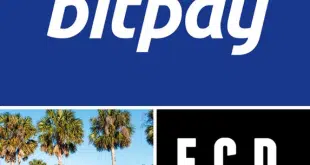The former EMV prom that’s turned into the date from hell for some payments-industry vendors continued for point-of-sale terminal maker and e-commerce services provider Ingenico Group SA in the fourth quarter.
The France-based firm that has major operations in Canada and the United States reported last week that its North American revenues declined 32% year-over-year in the fourth quarter to €66 million euros, or $69.8 million at current exchange rates. For the year, North American revenues fell 13% to €276 million ($291.8 million).
“As expected, recent performance was strongly affected by the bottleneck amongst distributors and the recent relaxation of EMV regulations, combined with high comparison basis in the American market,” Ingenico said in its earnings report, the last point a reference to strong sales a year earlier.

Terminal makers and other vendors have complained of delays in having their EMV chip card equipment certified, leading to long lead times in getting systems operating in the wake of the card networks’ October 2015 U.S. point-of-sale liability shifts. These shifts hold merchants responsible for counterfeit card fraud if their equipment can’t read chip cards.
“In North America, as expected, the U.S. continued to suffer from the relaxation in the rules surrounding EMV migration,” chief executive Philippe Lazare said at a Feb. 23 conference call, according to a Thomson Reuters StreetEvents transcript.
Lazare never said during the call exactly what that “relaxation” was, and a spokesperson did not respond to Digital Transactions News inquiries for clarification. But last September, Ingenico reported a “sudden and significant” decline in U.S. EMV-related revenues. Lazare at the time made reference to temporary changes by Visa Inc. and Mastercard Inc. in their chargeback rules meant to ease merchants’ burdens after the networks received a flood of complaints from merchants about chargebacks resulting from counterfeit cards. The changes, expect to last into 2018, prompted many small merchants to postpone their EMV upgrades, according to Lazare.
VeriFone Systems Inc., Ingenico’s San Jose, Calif.-based rival, also said those same changes have cut into its sales.
Lazare expects the U.S. EMV-related slowdown not to turn around until 2018. Despite that, Ingenico in North America has “made significant market share gains in new verticals like health care, hotels, and restaurants,” he said.
In all, Ingenico reported revenues of €2.31 billion ($2.45 billion at current exchange rates) in 2016, up 5% from €2.2 billion in 2015. Net profit attributable to Ingenico shareholders grew 6% to €244.3 million ($259 million).
North America generated 12% of Ingenico’s 2016 revenues. The Europe-Africa region, Ingenico’s biggest, accounted for 37% of revenues. The Asia-Pacific/Middle East and Latin America regions brought in 23% and 7% of revenues, respectively. Some 21% of revenues came from Ingenico’s ePayments segment.




